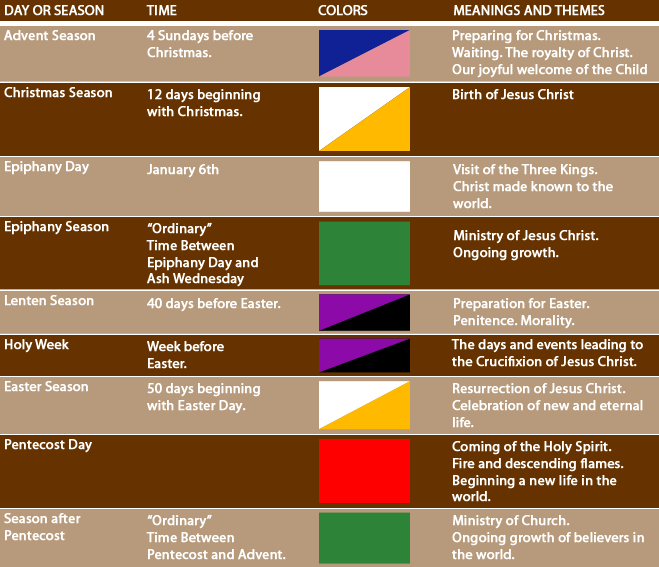How Christians Keep time

Our busy lives are filled with calendars and seasons. In addition to Summer, Spring, Winter and Fall, many of our lives follow the school year (September -June) and/or sports seasons (football, baseball, basketball,etc.). The calendar the Church keeps is very different. The liturgical year forms us as we hear the stories of our faith and learn to live in holy time. The liturgical year is color-coder to help us remember the themes of each season. As we continually re-experience this cycle of Christian life and practice, we are formed by them to become the people God invites us to be. Below are some ideas to help you learn about liturgical color and the cycle of the Church year.The table below is a quick introduction to the colors and themes of the liturgical year which begins on Advent 1 (the Sunday closest to November 30th).


- While the date of Christmas is fixed, the date of Easter is not. Easter is always celebrated the first Sunday after the first full moon after the vernal equinox. Because this varies from year to year, it determines the length of both Epiphany and the Season after Pentecost.
- The Forty days of Lent do not include Sundays (each Sunday is a "little Easter"), nor do they include the days of Holy Week.
